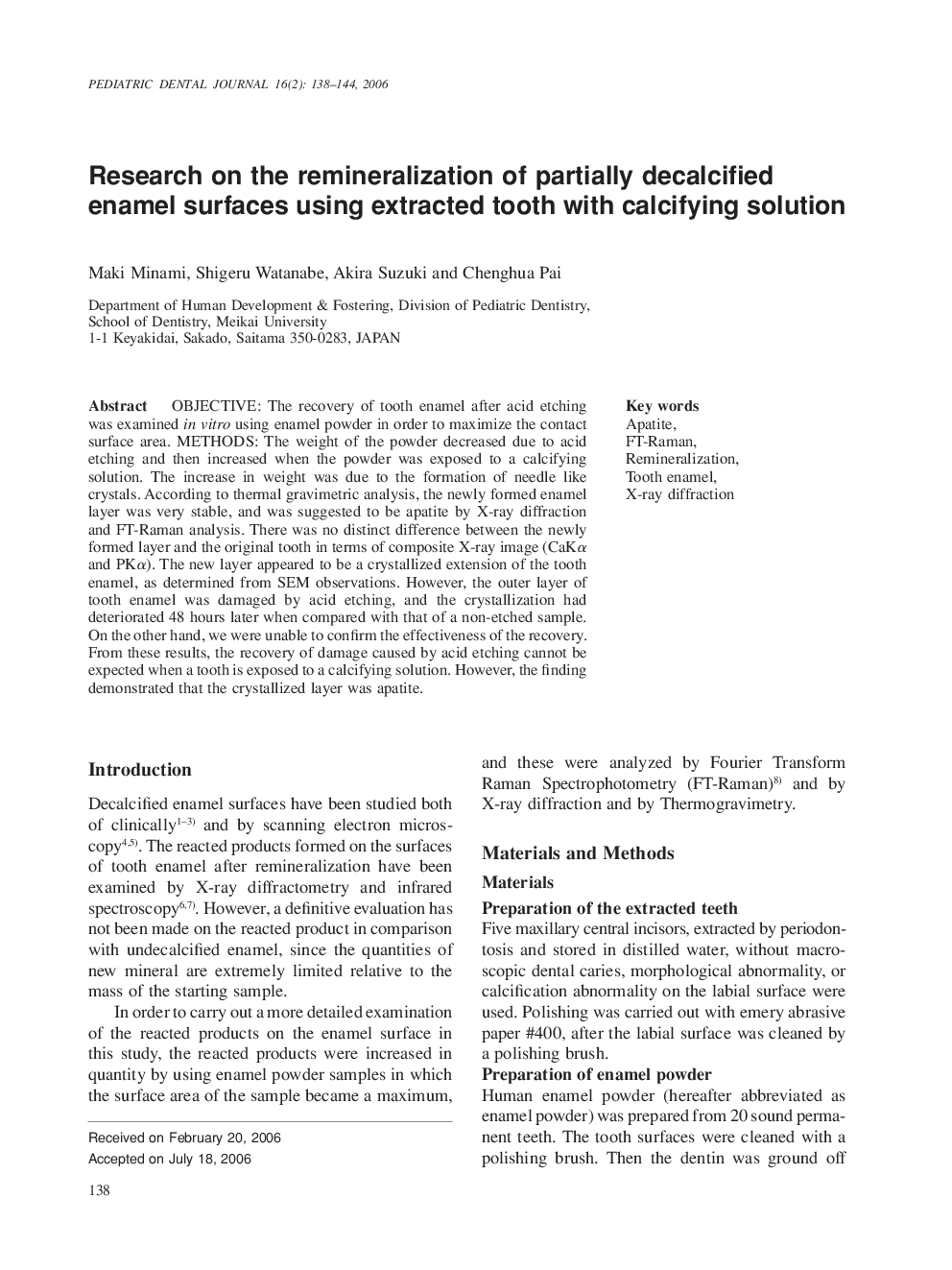| Article ID | Journal | Published Year | Pages | File Type |
|---|---|---|---|---|
| 3171801 | Pediatric Dental Journal | 2006 | 7 Pages |
ObjectiveThe recovery of tooth enamel after acid etching was examined in vitro using enamel powder in order to maximize the contact surface area.MethodsThe weight of the powder decreased due to acid etching and then increased when the powder was exposed to a calcifying solution. The increase in weight was due to the formation of needle like crystals. According to thermal gravimetric analysis, the newly formed enamel layer was very stable, and was suggested to be apatite by X-ray diffraction and FT-Raman analysis. There was no distinct difference between the newly formed layer and the original tooth in terms of composite X-ray image (CaKα and PKα). The new layer appeared to be a crystallized extension of the tooth enamel, as determined from SEM observations. However, the outer layer of tooth enamel was damaged by acid etching, and the crystallization had deteriorated 48 hours later when compared with that of a non-etched sample. On the other hand, we were unable to confirm the effectiveness of the recovery. From these results, the recovery of damage caused by acid etching cannot be expected when a tooth is exposed to a calcifying solution. However, the finding demonstrated that the crystallized layer was apatite.
